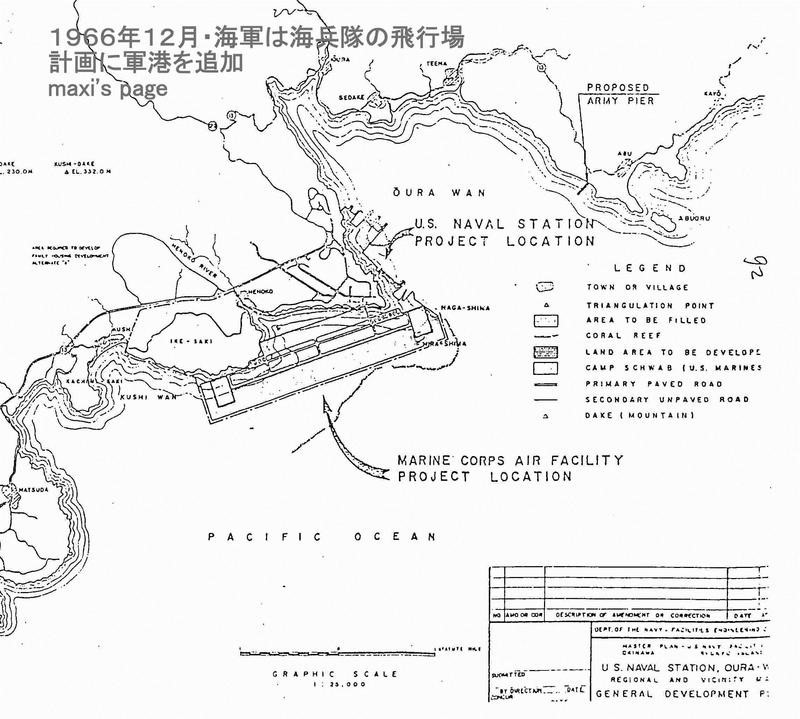The reasons for abandoning construction of the new US Marine Corps Air Facility at Henoko in northern Okinawa are many. It tramples on the Okinawan people’s anti-war sensibilities; it adds to the already unequal burden on Okinawa compared to mainland Japan and is therefore discriminatory; it will cause more accidents and crimes victimizing Okinawans; it will damage, perhaps fatally, Okinawa and Japan’s finest coral garden in Oura Bay (much of which is to be filled) and destroy the habitat and
|
The Henoko airbase project was proposed, as if a new idea, in 1996. Actually it dates back to this USMC proposal of 1966.
|
It may be that, from an engineering standpoint, it can’t be done.
The reasons for entertaining this doubt are also many. First, the fact that testing of the soil beneath Oura Bay, begun in 2014, continues today, suggesting that the Defense Agency has been unable to determine that the sea bottom is firm enough to bear the weight of the airstrip-length block of concrete it plans to set down there. Several engineers not employed by the Defense Agency have suggested an explanation. Much of Okinawa’s bedrock is limestone, which is notoriously soft. If the sea bottom is even partly limestone, that would make a poor foundation for an airport. To people who argue that surely the government’s engineers know how to overcome such problems, these engineers point out that Kansai International Airport, completed in 1994 by reclaiming land in Japan’s Inland Sea, is slowly sinking; every day trucks bring in rocks and dirt to shore it up, and the buildings are kept level with jacks. A further problem: Okinawa’s bedrock is laced with limestone caves. If there are any such caves under the Henoko construction site that should disqualify it as a place to put an airport.
Recently one
|
|
On 25 April I and Tarak Kauff (at Henoko with the visiting Veterans For Peace delegation) talked to one of the independent engineers. I told him I had heard two mayonnaise theories: one, that a mayonnaise sea bottom would make construction impossible; two, that construction is possible but would require new permits from the Governor. He told us the latter is true. When the sea bottom is unstable, it may still be possible to bring in a (real)
There is more. Seismologists have found two active earthquake faults directly under the construction site. That might be a gamble worth taking were it a matter simply of providing aircraft a place to land and take off. But in the Marine Corps’ Camp Schwab, which is where construction is taking place, there is a former nuclear
|
|
In the Okinawa protest
Some say Camp Schwab will surely sink in slime.
Some say it will be shattered by a fault.
From what we know of nature’s scale of time,
Its final grave will certainly be slime.
But far beneath the slime, an active fault
Could swiftly bring its business to a halt.
Related articles
- Hideki Yoshikawa with an introduction by Gavan McCormack, U.S. Military Base Construction at Henoko-Oura Bay and the Okinawan Governor’s Strategy to Stop It
- Sakurai Kunitoshi and Gavan McCormack, To
Whom Does the Sea Belong? Questions Posed by the Henoko Assessment - Gavan McCormack, “Ceasefire” on Oura Bay: The March 2016 Japan-Okinawa “Amicable Agreement” Introduction and Six Views from within the Okinawan Anti-Base Movement








